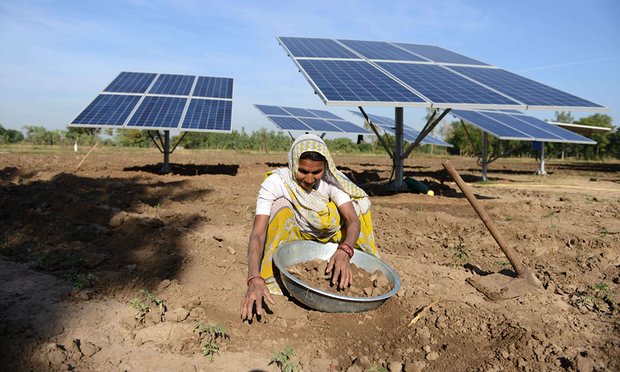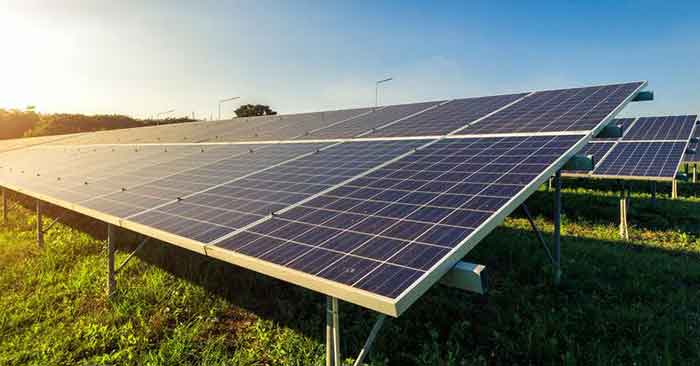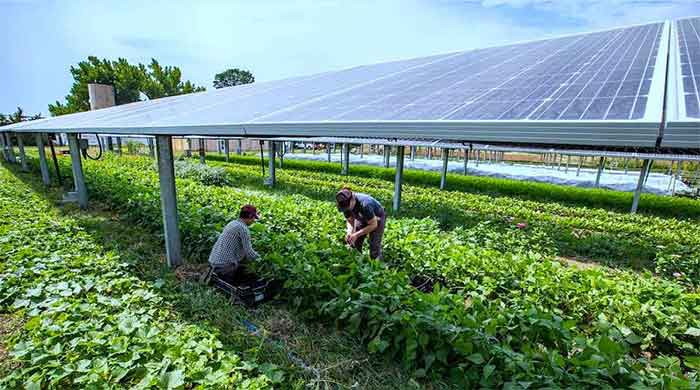
Letter to the Prime Minister
Subject: Promotion of decentralised solar electricity generation, in preference to large centralised solar generation projects
To
Shri Narendra D Modi
Prime Minister
Dear Shri Modi,
Over the last few years, as a part of the global effort to mitigate the effects of climate change, India has rightly taken conscious strides towards a shift from fossil fuels to renewable sources of electricity generation. The National Solar Mission (NSM), which has taken the central place in India’s National Action Plan on Climate Change, targets installing 100GW of grid-connected solar power plants by the end of the year 2022, in line with India’s Intended Nationally Determined Contributions (INDCs), which target to achieve 40% cumulative electric power installed capacity from non-fossil fuel based energy resources and to reduce the emission intensity of its GDP by 33 to 35% from 2005 level by 2030.
While India has aggressively moved forward in this direction, as at the end of August, 2021, the cumulative solar installed capacity could reach a level of only 45.61GW, out of which contribution from large centralised solar power generation plants is as high as 85%. Despite several schemes put in place by the Ministry of New & Renewable Energy (MNRE) to promote roof-top solar electricity generation to reach a level of 40,000 MW by the end of 2022, the cumulative roof-top generation achieved so far has been as low as 5486 MW.
In other words, we have fallen severely short of the goal set for solar generation, especially decentralised generation. Both the Centre and the States are moving away from decentralised solar facilities towards heavily centralised, large solar power projects. In my view, this trend needs to be contained and reversed at the earliest. It will be prudent for us to formulate a strategy that will promote decentralised solar electricity generation on a large scale.
In the long-run, there are distinct advantages for India in opting in favour of decentralised electricity generation facilities in preference to large centralised generation plants, for the following reasons.
- While there may be some marginal economies of scale in centralised generation, around 15-20% of the electricity generated from such facilities will be lost in transmission and distribution, leading to the benefit of the scale advantage being neutralised.
- Centralised solar electricity generation will require land in one place at the rate of 3 to 5 acres per MW, depending on the technology to be adopted. This will impose a severe strain on the scarce land resources of the country. Even in the case of coal-based electricity generation which requires around one acre of land per MW, there has been public opposition to lands being acquired for setting up power projects.
- Compared to centralised solar electricity generation, since solar rooftop facilities and solar irrigation pump sets are smaller in size and are dispersed regionally, the risks involved are less and are more easily manageable.
- In the case of large centralised solar generation plants which have an economic life of 15-20 years, once set up, the technology choices get preempted, whereas this is a field in which technologies are constantly evolving and the efficiency of conversion of solar radiation into electricity is constantly improving. In the long run, therefore, opting in favour of much smaller distributed facilities would be more prudent as they permit induction of more efficient technologies on a continuing basis.
- At a time when the unit cost of electricity from solar plants is falling sharply due to competition and introduction of state-of-the-art technologies, power purchase agreements (PPAs), valid for 15-20 years, entered into by the State utilities are proving to be disadvantageous in the long run, resulting in some States even trying to reopen the PPAs, a trend that could act as a disincentive to genuine investors. In the case of decentralised generation units, such a risk may be minimal, as the States can pick and choose the panel suppliers in smaller lots from time to time, as the programme expands and the technology improves.
- Decentralised solar generation provides an opportunity to the consumers to become equal partners in electricity generation and enable them to earn incomes from the surplus energy they generate. In the case of centralised generation plants, residential and agricultural consumers of electricity are forced to become dependent on the utilities that convey the electricity, whereas they are less dependent on the utilities, if they become electricity generators themselves. In a way, this will effectively democratise electricity generation.
- In the case of centralised solar generation, the delivered price of electricity at the consumer-end is the cost of generation plus the cost of transmission and distribution, adjusted upwards for the T&D losses. On the other hand, in the case of distributed electricity generation, every unit of electricity supplied by the consumer to the utility would save for the latter, a corresponding unit of electricity purchased by the utility at the highest cost at the margin and delivered with T&D losses. Adopting an “avoided cost rate structure”, it will be financially viable for the utility to pay a correspondingly higher price to the consumer at that rate. This will incentivise the consumers to set up rooftop panels and individual irrigation facilities, as it will create a new avenue of income generation for them. This will be a win-win situation for the utilities and the consumers in an equitable manner.
- Many corporate investors who have bid for setting up large centralised solar power plants are known to owe large dues to the financial institutions against the loans taken by them for other projects. The public financial institutions are already saddled with NPAs and one cannot rule out the possibility of some of the large solar projects compounding this problem further, as there is stiff competition among them to get the franchise for setting up such plants, resulting in the quoted tariffs falling below the notified benchmark tariffs. Going by their past track record, they may default on loan repayments in the future.
Against the above background, I suggest that the Ministry of New & Renewable Energy (MNRE) review the strategy on solar electricity generation, reforumate the approach to solar rooftop facilities/ solar irrigation pump sets and shift solar energy development away from large centralised solar plants. The schemes put in place by MNRE to promote indigenous solar panel manufacture are welcome and they need to be strengthened and enlarged so that sufficient panel supplies can be arranged from indigenous sources to meet a much higher goal than now to be achieved in decentralised generation.
Recycling of solar panel waste material will soon pose problems. There is a need to promote R&D to develop environment-friendly recycling approaches.
The primary objective of the Solar Energy Corporation of India (SECI) seems to be “to become the leader in development of large scale solar installations, solar plants and solar parks and to promote and commercialize the use of solar energy to reach the remotest corners of India“. Instead, SECI’s primary role should have been to promote decentralised solar facilities. If this is not possible, I suggest that a separate promotion-cum-financing institution similar to the Rural Electricity Corporation (REC) [as it was originally conceived and operated] should be set up exclusively for promoting decentralised solar generation facilities. At the grassroot (village) level, Amul-type societies run by the decentralised generator-cum-consumers could help promote such facilities on a large scale.
I may add that many individual farmers of Andhra Pradesh are desirous of setting up such societies, provided they get loans on easy and competitive terms, secure a reliable reverse metering arrangement and receive a remunerative price for the surplus electricity they sell to the local utilities. I am sure that the consumers in the other States would also be interested in setting up similar solar societies. MNRE can make a beginning by setting up pilot solar societies to move forward without delay.
In countries like the USA, I have come across rooftop solar units set up with realtime internet-based monitoring facilities that enable the consumers to keep track of the solar electricity generated, used for self consumption and sold to the utility. India needs to adopt state-of-the-art technologies that permit individual consumers and societies to monitor generation, self use and sale to the utility in a transparent manner.
In my view, India can and should assume a global leadership role in promoting distributed solar electricity generation facilities on a large scale, in preference to setting up large solar plants.
I hope that MNRE will consider these suggestions urgently and bring about a paradigm change in the policy on solar electricity generation.
Regards,
Yours sincerely,
E A S Sarma
Former Secretary to Govt of India
Visakhapatnam














































